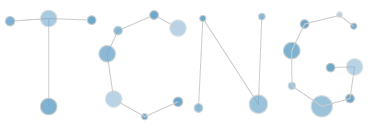Gene
ANKRD34B
| Entrez Gene ID | 340120 (See on NCBI) |
| Description | ankyrin repeat domain 34B |
| Gene Synonyms | DP58 |
| Node consisting of this Gene | ANKRD34B DP58 |
Networks including this gene
| GSE10972_top8000 - GSE10972 - SiGN-BN NNSR | Colon cancer |
| GSE12428_top8000 - GSE12428 - SiGN-BN NNSR | Current smoking-specific gene expression signature in bronchial epithelium is enhanced in squamous cell lung cancer |
| GSE12472_top8000 - GSE12472 - SiGN-BN NNSR | A COPD-related gene expression signature in squamous cell lung cancer |
| GSE13255_top8000 - GSE13255 - SiGN-BN NNSR | Gene Expression Profiles in Peripheral Blood Mononuclear Cells Can Distinguish Patients with NonSmall Cell Lung Cancer. |
| GSE15966_top8000 - GSE15966 - SiGN-BN NNSR | Gene expression signature predictive of rapid response to imatinib mesylate in Gastrointestinal Stromal Tumor (GIST) |
| GSE16987_top8000 - GSE16987 - SiGN-BN NNSR | A new gene expression signature, the ClinicoMolecular Triad Classification, may improve prediction and prognostication of breast cancer at the time of diagnosis |
| GSE19417_top8000 - GSE19417 - SiGN-BN NNSR | Human esophageal adenocarcinomas |
| GSE22153_top8000 - GSE22153 - SiGN-BN NNSR | Gene Experssion Profiling-Based Identification of Molecular Subtypes in Stage IV Melanoma with Different Clinical Outcome (test set) |
| GSE23772_top8000 - GSE23772 - SiGN-BN NNSR | Why does HAMLET preferentially kill tumor cells? p38-dependent death in tumor but up-regulation of innate immunity in healthy, differentiated cells |
| GSE26549_top8000 - GSE26549 - SiGN-BN NNSR | Gene Expression Profiling Predicts the Development of Oral Cancer |
| GSE29288_top8000 - GSE29288 - SiGN-BN NNSR | Comparison between cell lines from 9 different cancer tissue (NCI-60) (Agilent WG platform) |
| GSE29817_top8000 - GSE29817 - SiGN-BN NNSR | Membranous Expression of Ectodomain Isoforms of the Epidermal Growth Factor Receptor (EGFR) Predicts Outcome after Chemoradiotherapy of Lymph Node Negative Cervical Cancer |
| GSE9309_top8000 - GSE9309 - SiGN-BN NNSR | Recovery of biological information under heterogeneous experimental conditions using subgroup standardization. |
(13 networks)
